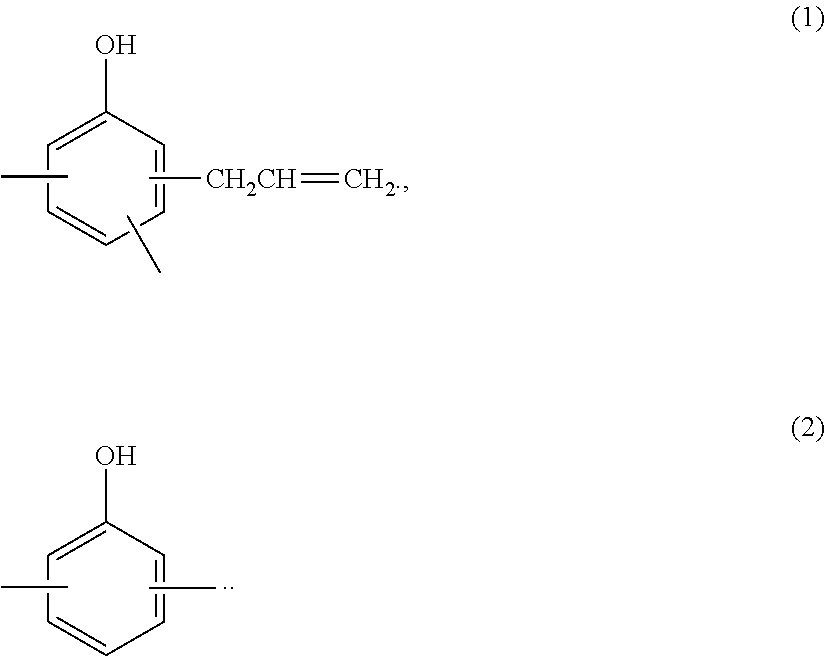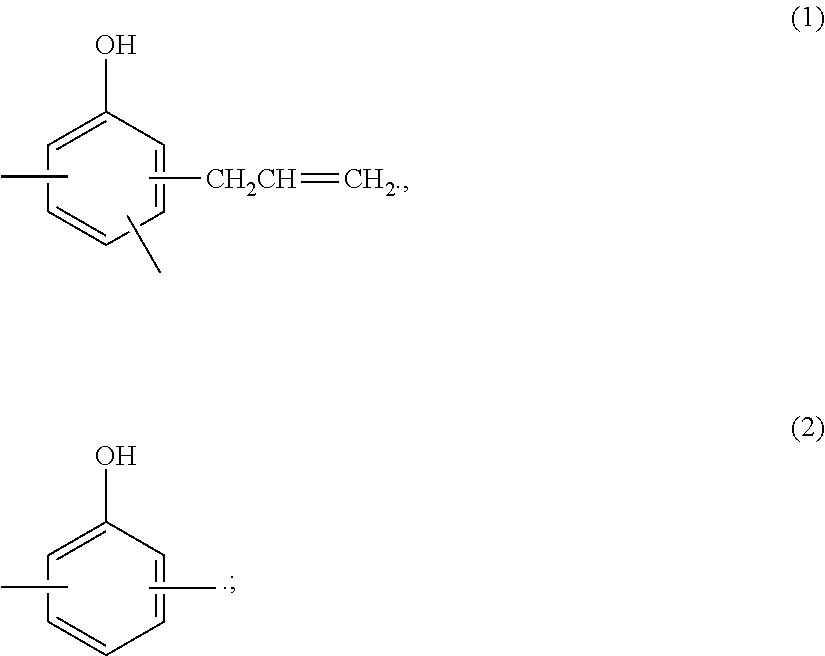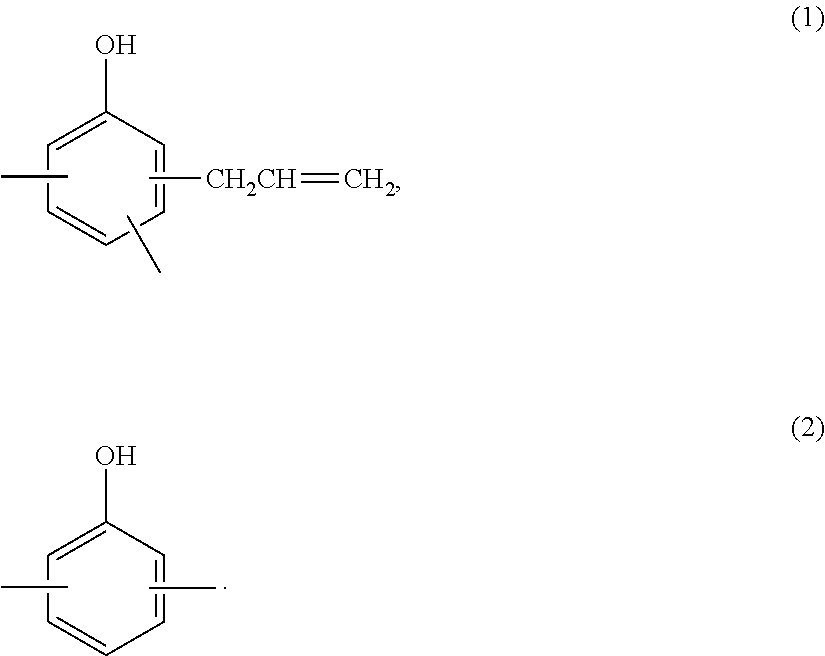Epoxy resin composition for electronic component encapsulation and electronic component device using the same
- Summary
- Abstract
- Description
- Claims
- Application Information
AI Technical Summary
Benefits of technology
Problems solved by technology
Method used
Image
Examples
examples
[0063]In the following, Examples are described together with Comparative Examples. However, the present invention is not limited to these Examples. In Examples and Comparative Examples, unless otherwise indicated, “parts” and “%” are on the weight basis.
[0064]In advance of the production of an epoxy resin composition, an allylated phenol resin was synthesized (Synthesis Examples B-1 to B-8).
synthesis example b-1
Synthesis of Allylated Phenol Resin (APN-1)
[0065]105 Parts of phenol novolak resin (GS-180, produced by Gun Ei Chemical Industry Co., Ltd., hydroxyl group equivalent: 105 g / eq.), 181.5 parts of allyl bromide (produced by Tokyo Chemical Industry Co., Ltd.), 207.3 parts of potassium carbonate (produced by Wako Pure Chemical Industries, Ltd.) and 500 parts of acetone (produced by Wako Pure Chemical Industries, Ltd.) were mixed and refluxed under heating for 24 hours in a nitrogen gas stream. After cooling to room temperature, filtration and concentration were performed, and the residue was added with 400 parts of ethyl acetate (produced by Wako Pure Chemical Industries, Ltd.), then washed once with 200 parts of hydrochloric acid (produced by Wako Pure Chemical Industries, Ltd.) adjusted to 5% by dilution with distilled water, and further washed twice each with 200 parts of distilled water. Thereafter, the organic layer was extracted, dried over magnesium sulfate (produced by Wako Pure ...
synthesis example b-2
Synthesis of Allylated Phenol Resin (APN-2)
[0066]105 Parts of phenol novolak resin (GS-180, produced by Gun Ei Chemical Industry Co., Ltd., hydroxyl group equivalent: 105 g / eq.), 121.0 parts of allyl bromide (produced by Tokyo Chemical Industry Co., Ltd.), 138.2 parts of potassium carbonate (produced by Wako Pure Chemical Industries, Ltd.) and 500 parts of acetone (produced by Wako Pure Chemical Industries, Ltd.) were mixed and refluxed under heating for 24 hours in a nitrogen gas stream. After cooling to room temperature, filtration and concentration were performed, and the residue was added with 400 parts of ethyl acetate (produced by Wako Pure Chemical Industries, Ltd.), then washed once with 200 parts of hydrochloric acid (produced by Wako Pure Chemical Industries, Ltd.) adjusted to 5% by dilution with distilled water, and further washed twice each with 200 parts of distilled water. Thereafter, the organic layer was extracted, dried over magnesium sulfate (produced by Wako Pure ...
PUM
| Property | Measurement | Unit |
|---|---|---|
| Temperature | aaaaa | aaaaa |
| Temperature | aaaaa | aaaaa |
| Fraction | aaaaa | aaaaa |
Abstract
Description
Claims
Application Information
 Login to View More
Login to View More - R&D
- Intellectual Property
- Life Sciences
- Materials
- Tech Scout
- Unparalleled Data Quality
- Higher Quality Content
- 60% Fewer Hallucinations
Browse by: Latest US Patents, China's latest patents, Technical Efficacy Thesaurus, Application Domain, Technology Topic, Popular Technical Reports.
© 2025 PatSnap. All rights reserved.Legal|Privacy policy|Modern Slavery Act Transparency Statement|Sitemap|About US| Contact US: help@patsnap.com



